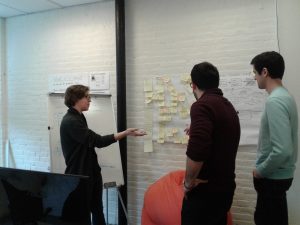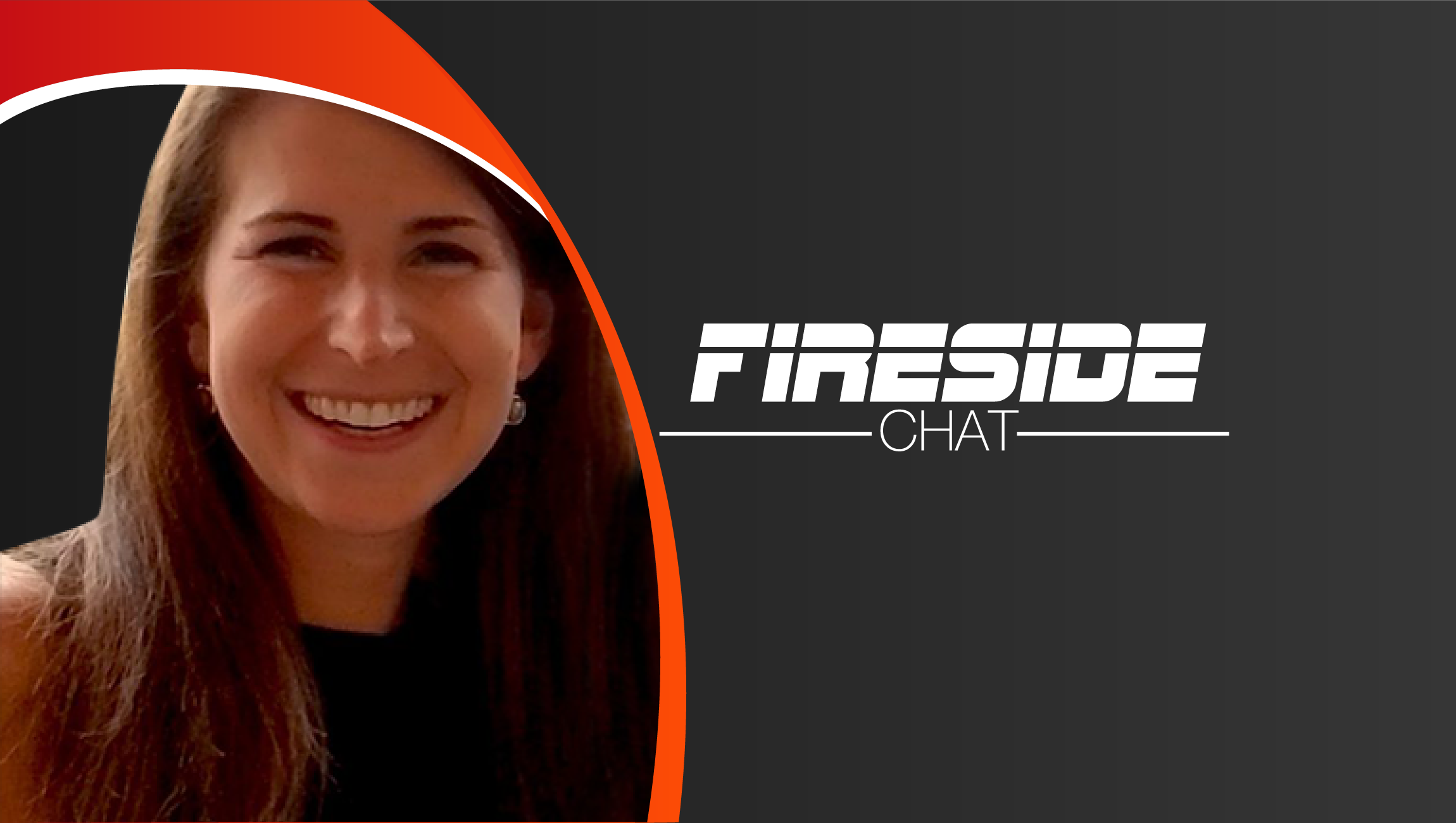Sophie Slowe talks about the tools and strategies they use to create effective B2B content at Kitewheel.
Know My Team
How big is your team and what drives them to succeed in meeting small-term and long-term goals at Kitewheel?
At Kitewheel I cover all strategy work for the US and have a colleague who supports me in EMEA. We are a small but nimble and highly driven team. We are motivated in the immediate term by the excitement, challenge and diversity of each project that we take on. In the longer-term, we play an intrinsic role in the success of the business – both supporting the pre-sales effort and growing our existing partners. As a result, our impact is clearly identifiable on Kitewheel’s revenue and bottom line, which inspires us to keep going!
How tech-savvy is your marketing, sales and branding team? How do you rate them on a scale of 1-10? How do you inspire them to work with technology?
Our marketing, sales and branding team do an excellent job of bridging the gap between our complex technology platform and the need to explain it in a relevant and accessible way. They are also good at adjusting the level of technical depth in the messaging for different audiences.

In terms of inspiration, I have helped our marketing team recently to “practice what we preach”. I built out a strategy and consumer journey experience for our own prospects and customers and worked with our marketing team to implement it across our various channels (paid media, website, email, sales database).
How do you think young sales professionals should train themselves to master MarTech skills?
There are some excellent webinars on our own website that would be a good starting point. There is also a LOT of lingo and acronyms in the MarTech industry, so I highly recommend keeping a personal glossary to note down new jargon whenever you hear it.

B2B Marketing Strategy and Customer Acquisition Models
Tell us about your role at Kitewheel and how you got here.
I started my career on the marketing side, working 10 years at Omnicom agencies in both London and NYC. While working in NYC (at RAPP), I led Nestlé’s Gerber account and we built out a multi-million dollar CRM Behavioural Support Program for them. We used Kitewheel to power all the rules and logic, and I worked with the KW team very closely day-to-day. I then joined Kitewheel to open our New York office and set up the Strategy Practice.
We recognized the need for our prospects and partners to understand the applicability of the software to their own businesses. That is essentially my role – to help educate and guide them through how customer journeys, powered by Kitewheel, can drive their businesses forward.
Are marketing technologies pushing the boundaries of present-day brand engagement and customer experience?
Yes, undoubtedly. As technology improves, repairing the damage that was done by previous marketing systems all being built in siloes, new opportunities are arising for much more cohesive, tailored and powerful marketing to be delivered to consumers.
How often do you measure the performance of your marketing analytics and sales reporting tools?
All of our customer journey projects have KPIs and business goals outlined upfront. Then the software itself captures and records metrics in real-time at each step along the live journey. We use these metrics to understand the effectiveness of the journey and how to further optimize it to drive greater impact.
What are the dynamic elements driving your B2B customer engagement model? How do you execute Engagement Economy vision, Strategy, Product and Corporate development at Kitewheel?
Our website is powered by Kitewheel’s own software to identify new B2B visitors and dynamically serve them the most suitable content based on how they have arrived at the site (paid ad, SEM, social, email, PR, etc.). We then track and record their browsing behavior and assign them a resultant Engagement Score as well as flagging their topics of interest. When they return to our site we recognize their cookie immediately and align the web messaging, imagery and CTAs to both their engagement level and their specific interests.
Marketing and Sales Alignment: Social Media and Content Marketing Strategies
What are the tools and strategies you use to create effective B2B content at Kitewheel?
I work with our partners to design journey experiences that tightly align with the needs and opportunities of their businesses. I start with an upfront assessment, gathering intel and insight into their current marketing programs and the results that they are delivering.
I then run in-depth ideation workshops onsite, facilitating and guiding our partners to design strategies and use cases that will drive against the specific KPIs we have outlined in advance. I then take these ideas and translate them into detailed Journey Maps within the Kitewheel platform. After that, I orchestrate the rule-writing process, in which logic and decision structures are put in place to bring the journey to life and make it executable within our platform.
Could you provide us a sneak peek into your MarTech acceleration strategies?
These are highly tailored to the brand in question, but include workshops on topics such as –
- Testing and hypotheses design and best practices – A/B, Multivariate, Monte Carlo
- Defining optimal KPI metrics and measuring journey-driven ROI
- Scoring model formats and activation – eg. propensity to purchase/churn, lifetime value, etc.
What are the types of content (web and social) you prefer to read and retain/share in a day, week, month, and a quarter?
I am a sucker for TED Talks. I tend to find them just the right length and level of depth. I also feel I retain information much better when it goes in through my eyes and my ears. I read Google Think, the Nudge blog, AdAge, Campaign, the Kitewheel blog (obviously) and of course MTS.
Out of all marketing collateral, including the whitepaper, brochures, e-book, playbook, case studies, webinar, research reports, and infographics, which ones resonate the most with your customers?
It tends to vary with different customers. The more technical persona (CTO) prefers tech specs and detailed documentation of the software. The more marketing-centric persona (CMO) prefers hard-hitting, concise collateral – eg. case studies and infographics. Those customers more closely responsible for the actual design of the journeys (Strategy, Planning, UX, Analytics) tend to lean towards the more in-depth content – whitepapers, research reports, webinars.
Customer Success and Technology Insights
From a tactical standpoint, how often does your organization revisit the automation stack?
Constantly. We are always developing new features and refining existing ones. We tend to release them in batches though, typically once every two months.
How does the technology involved impact your customer building/partnership model?
The Kitewheel technology is the crux of our entire business, so it is central to our customer relationships and their successful growth. As new features and capabilities are built out we ensure that our partners are informed, trained and supported in making the most of each new technology offering. The platform, while not complicated, is certainly complex, so our customer relationships are very close ones, supported by robust Strategy and Delivery services.
How do you see the technology you use impact the customer acquisition and success rate?
Our platform is incredibly powerful when it comes to acquisition and conversion journeys. We have delivered impactful use cases across many different verticals – automotive, retail, travel, finance, CPG, etc. Our technology helps our partners to orchestrate journeys that move prospects down the funnel towards conversion, using individual level, timely, personalized communications, across relevant touchpoints.
We close gaps in the marketing ecosystem – connecting the paid channels to the owned channels, the social activity to the web activity, the brick-and-mortar to the digital – enabling a more seamless path to acquisition, conversion and, ultimately, successful long-term retention as well.
Do you see sales and marketing technologies unifying or evolving together to deliver higher ROI to CMOs?
Absolutely. It is imperative for these systems to integrate so that true monetary value can be assigned to marketing efforts. At the moment digital proxies for purchase are often leveraged, but in future CMOs will demand solely hard ROI. For this unification to be fully realized, online and offline sales will need to become synced at the individual consumer level. This progress is already underway with the use of in-app payment tools, digital wallets, digital loyalty programs, email capture at most retail POS systems, etc. There is still a time lag driven by batched data processes, but the industry is undoubtedly moving in the direction of a more seamless and integrated alignment of sales and marketing.
What is that one piece of advice you received that you would like to pass on to the MarTech industry?
The consumer is king. Always put the needs, desires, demands, and expectations of your consumers first. Strive to see the world from their shoes and build your business up from there.
Tag a person from the industry that you would like to read answers from, in our Fireside Chat:
Ann Lewnes, EVP and CMO of Adobe
Thank You, Sophie, for chatting with us. We hope to see you again at MTS!











